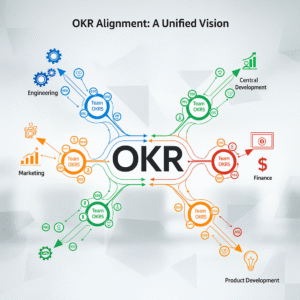In the business world, it’s not uncommon to see reports and metrics that indicate smooth and successful operations. However, such metrics can be misleading at times. Even though everything seems fine at the surface, a closer inspection may reveal underlying issues, inefficiencies, and employee dissatisfaction. These are commonly known as the “watermelon metrics.“
Causes of Watermelon Metrics
Human beings have a natural inclination towards optimism and tend to exhibit a desire for positive outcomes, but besides this, there are other reasons why we fall into the watermelon metric trap.
- Not measuring the right thing: One of the reasons why data analysis can be misleading is when organizations measure the wrong things. While the data may seem comprehensive, it might not provide the complete picture. This often happens when companies focus on irrelevant metrics or only quantitative data, ignoring the qualitative aspects. For example, if you track the volume of tasks completed instead of the quality of the output, you may end up with a positive report but dissatisfied customers.
- Lack of psychological safety: If a company culture discourages employees and customers from speaking up or providing feedback, it can lead to serious consequences. When people are afraid of retaliation or believe that their opinions won’t be taken seriously, they are less likely to express their concerns. This results in a lack of valuable experience data, which only further worsens the problem.
- Lack of alignment: Many leaders neglect to establish a clear link between their metrics goals, and strategies. Leaders sometimes measure the wrong aspect of their product so the team learns the wrong thing. It’s a common mistake to measure some metrics, but you forget that you’re measuring to be able to learn and improve.
Detection and Resolution
Detecting watermelon metrics requires a shift in mindset and approach:
- Ask Why: It is essential to inquire about the reasons behind certain circumstances. For instance, if we missed a target even though the metrics indicated we should have met it, run a retrospective to look at what might be different next time.
- Understand your data: It is important to ensure that the metrics we rely on are providing us with accurate information and not just telling us what we want to hear. Therefore, it is crucial to use reliable data to support the indicators we use. For instance, try to find objective metrics to measure progress instead of subjective ones based on somebody’s opinion. This isn’t always possible, but it is valuable to know how the underlying data is being collected.
- Check that what you are measuring is contributing to usable metrics: Validate that it is understood what action to take when the metrics change. Doing so will help cross-check that you are measuring the right data. If you can’t articulate what action would be taken if a metric moves in a particular direction or crosses a particular threshold, it likely isn’t a usable metric.
- Adopt transparency and candor culture: encourage open and honest communication within your organization. Ensure that employees and customers feel safe and empowered to express their concerns without fear of retribution. Recognize that problems are opportunities for improvement, not reasons for blame. Nothing will create watermelon metrics faster than condemning the bearer of bad news.
- Diversify your data sources: relying on a single source of measurement can be risky. Consider a broader range of data sources, including user feedback, to gain a more comprehensive understanding of your organization’s performance. Also think about how the metrics relate to each other. If one metric is green and another red, what does that combination mean.
Conclusion
Just like Agile methodologies, which aim to reduce time-to-market and eliminate hand-offs, tracking the right metrics can help keep your organization efficient and effective from the inside out, leading to satisfaction for both customers and stakeholders. Remember that it’s not just about the surface-level appearance but also the substance within that truly matters. Don’t let your organization be led by watermelon metrics – a misleading façade that covers underlying issues. Instead, have an open dialogue, reevaluate your metrics, and ensure that you are serving both your employees and customers effectively.
For a deeper dive into this topic, check out our webinar on watermelon metrics to learn more about avoiding the watermelon effect and improving your organization’s performance.
Xodiac offers a range of bundled advisory services and training. Our corporate training is highly interactive and immersive, all adaptable for virtual delivery. We guide your journey in adopting Agile, implementing DevOps, navigating Cloud Migration, or driving Digital Transformation. Our Portfolio Design services help organizations connect strategy to execution and accelerate their delivery, avoiding watermelon metrics along the way.
For inquiries or custom needs, reach out to us at [email protected]. We want to help steer you towards your goals.




